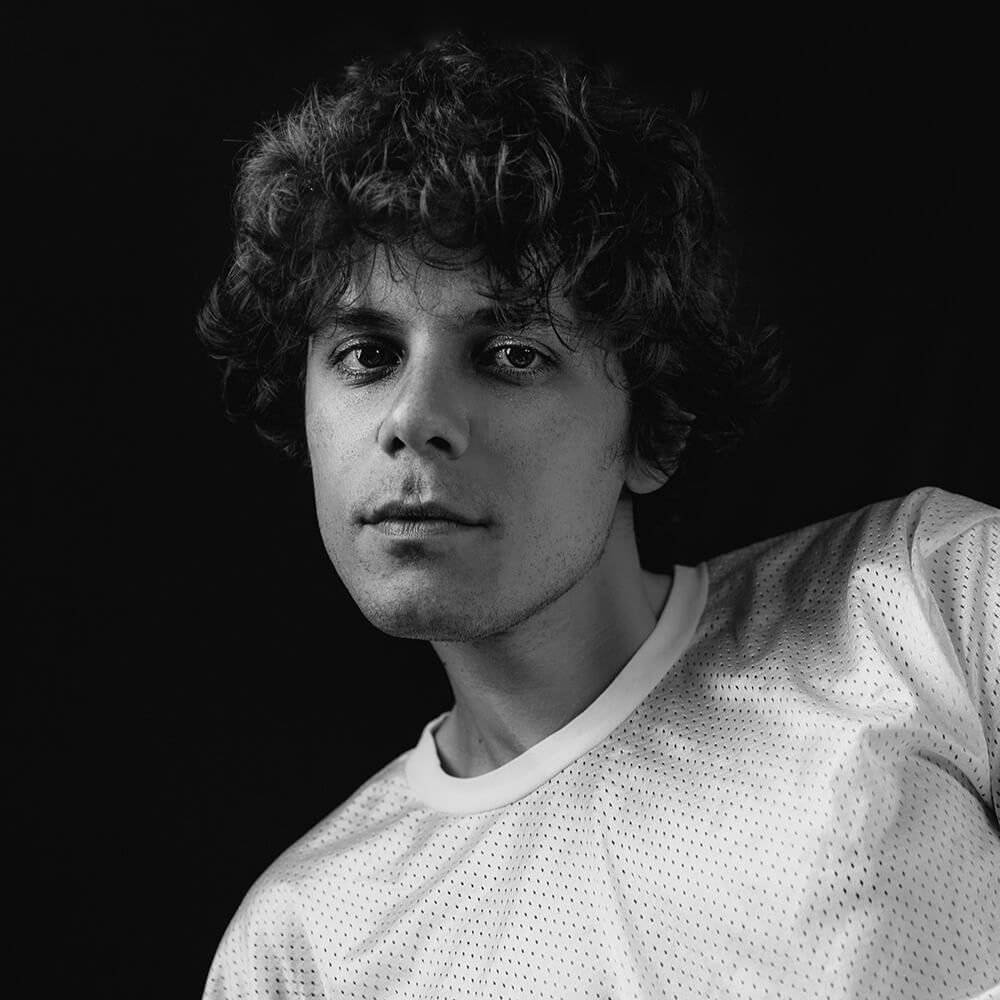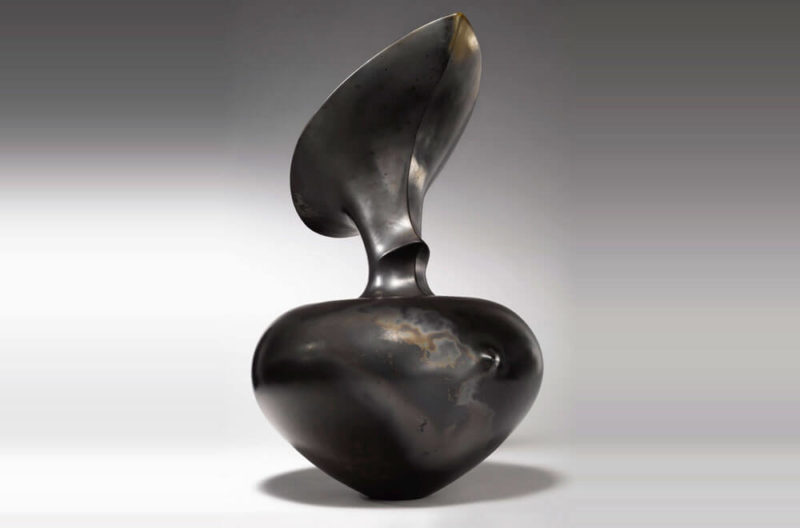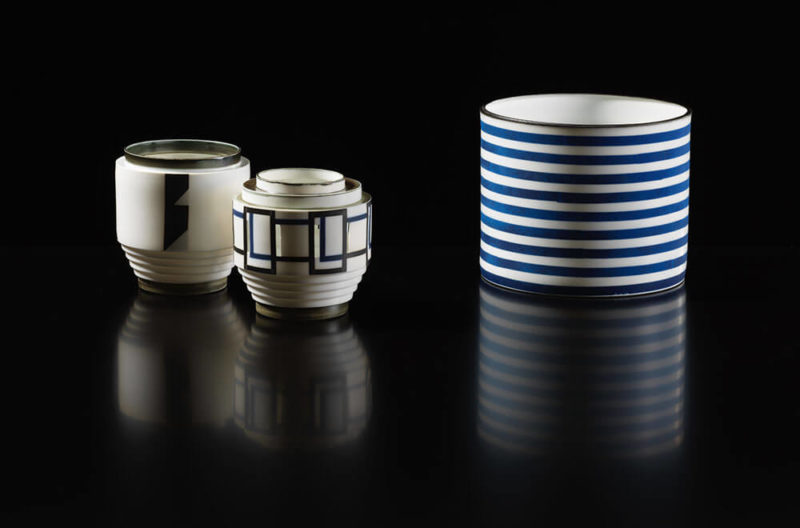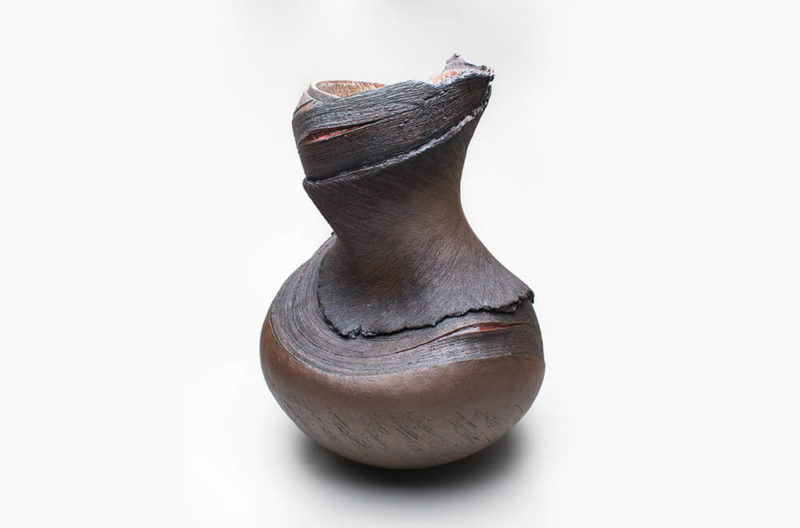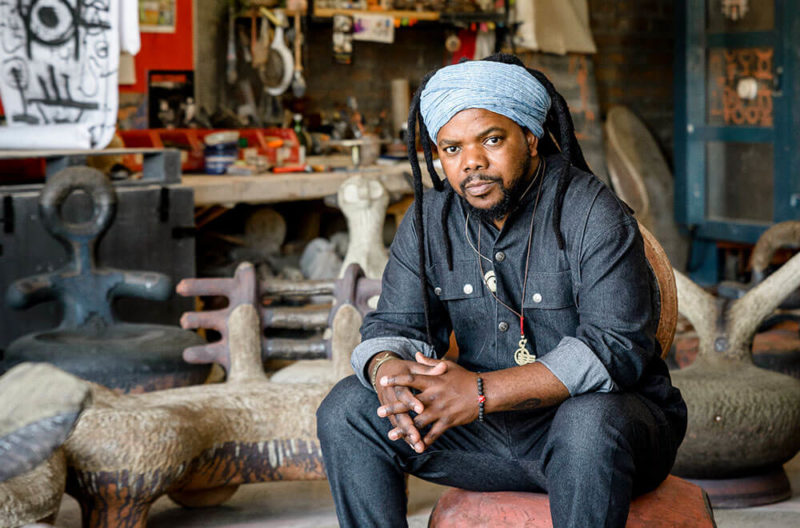Magdalene A.N. Odundo DBE: New Work
The Kenyan-British ceramicist opens her first solo exhibition in New York in three decades.
Salon 94, New York
8th May – 26th June 2021
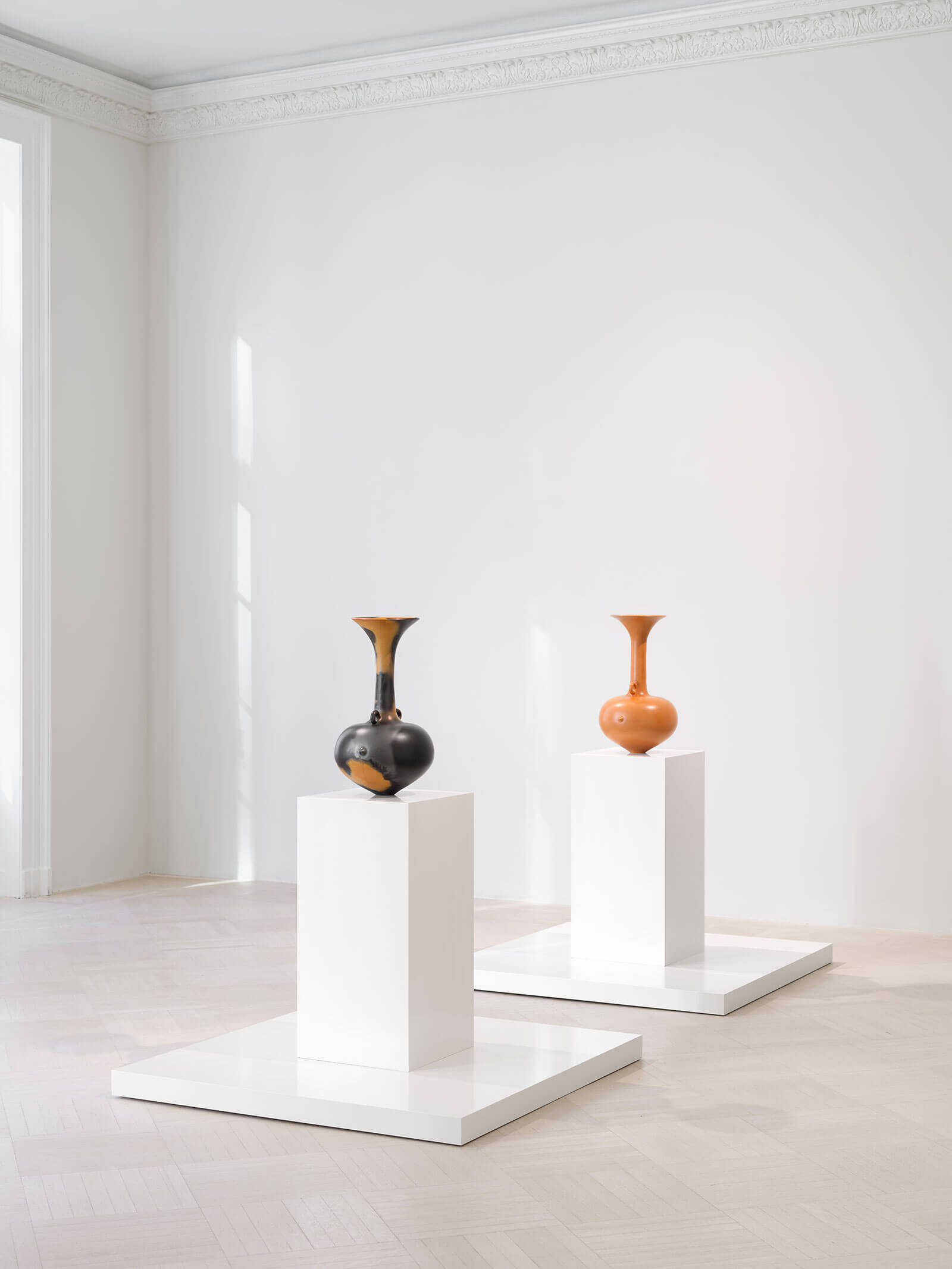
Installation view with Magdalene A. N. Odundo, ‘Untitled’, 2019 (left); ‘Untitled’, 2020 (right)
COURTESY: Magdalene A. N. Odundo, Salon 94 and Anthony Slayter-Ralph / PHOTOGRAPH: Dan Bradica
THE SCULPTURES IN ceramicist Magdalene A.N. Odundo DBE’s new exhibition at New York’s Salon 94 gallery are born of patience. Of the ten works on view, some waited as long as five years to enter Odundo’s brand new kiln at her studio in Farnham, Surrey. She has been firing the bulbous vessels over the last few months for this, her first exhibition in New York in over thirty years. They are spread quietly across the third floor of the gallery’s dazzling new uptown headquarters. Set against a lush Central Park view, the sculptures are washed by changes in the spring sunlight.
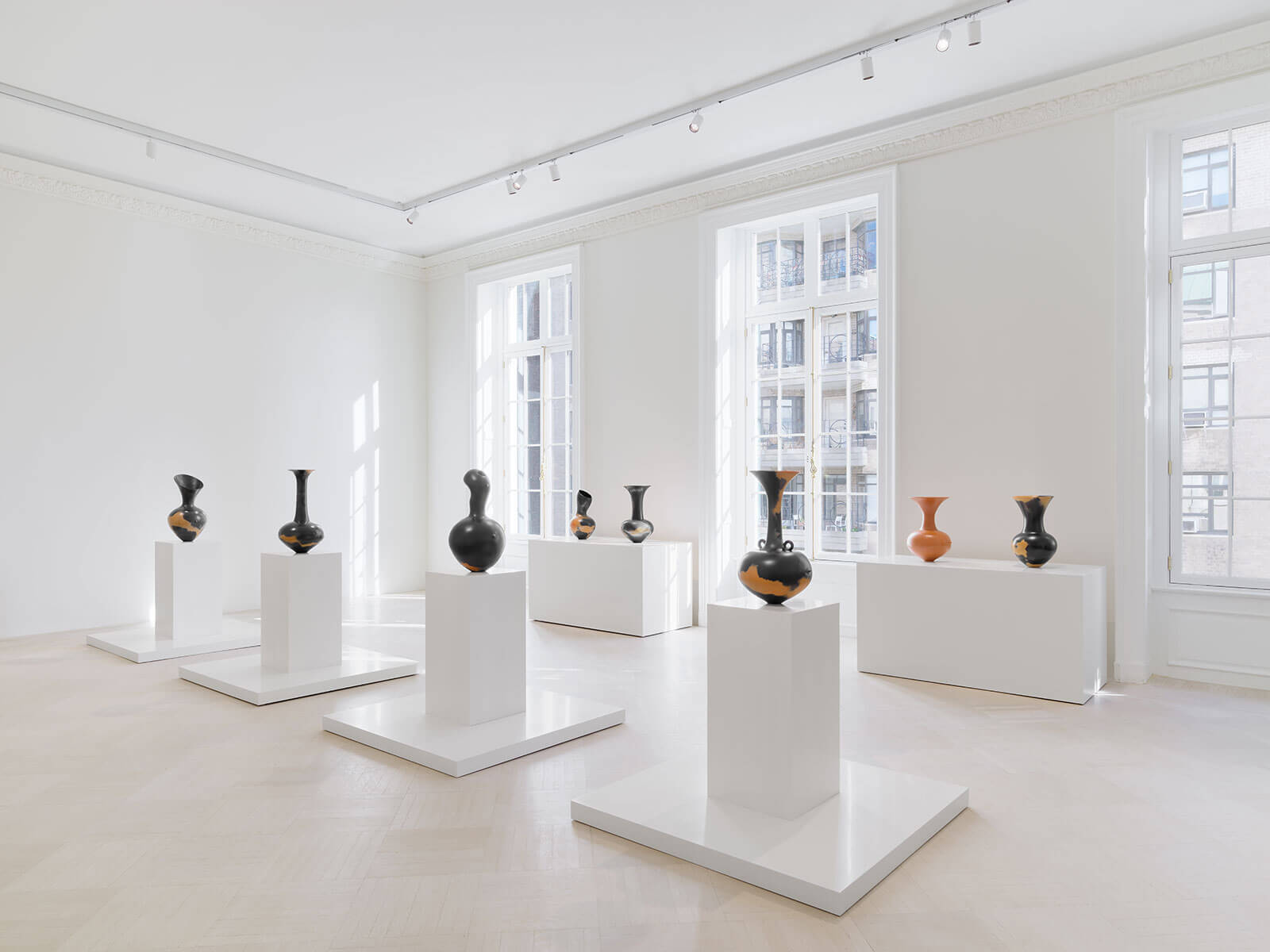
Installation view
COURTESY: Magdalene A. N. Odundo, Salon 94 and Anthony Slayter-Ralph / PHOTOGRAPH: Dan Bradica
Jeanne Greenberg Rohatyn, the founder of Salon 94 gallery, has been practicing patience as well. “I’ve been planting seeds for this exhibition since I first saw her work over ten years ago,” she admits. After her first encounter with Odundo’s pottery – an experience the seasoned gallerist describes as “being overwhelmed” – she acquired one of her vessel sculptures. Later, she selected one of the artist’s works for her art and design gallery’s group exhibition, ‘More Material’, co-curated with Nigerian-British fashion designer Duro Olowu, in 2014. She eventually got in touch with Odundo’s long-term dealer, Anthony Slayter-Ralph, with the idea of co-organising a solo exhibition that emphasises the sculptural merit in Odundo’s practice. Finally, a few years ago the gallerist met Odundo in England, and the Kenyan-British artist’s return to the other side of the pond became more than just a fantasy for the dealer.
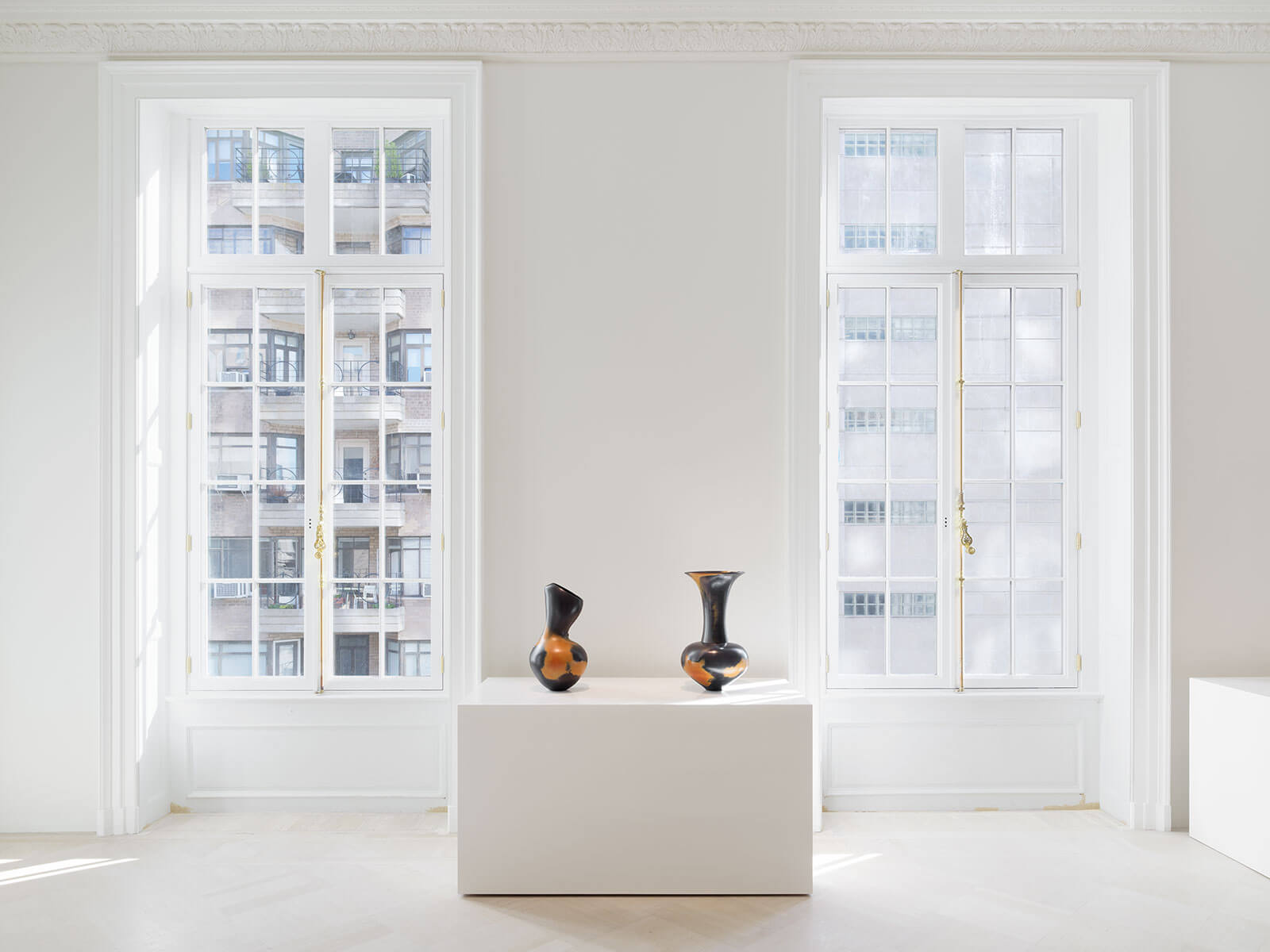
Installation view with Magdalene A. N. Odundo, ‘Untitled’, 2016 (left); ‘Untitled’, 2021 (right)
COURTESY: Magdalene A. N. Odundo, Salon 94 and Anthony Slayter-Ralph / PHOTOGRAPH: Dan Bradica
Evident in Odundo’s practice are influences from myriad pottery traditions, ranging across cultures and eras – from the thousand-year old firing method of Nigerian Gbari women to the use of balance in the ancient earthenware tradition of Japan’s Jōmon period. Her work, which is held in over fifty museums worldwide, is especially recognisable for the dense burnished smoothness of her terracotta surfaces. Her vessels seduce the eye with their seamless silhouettes, which Odundo achieves through hand-coiling rather than throwing on a wheel. Hefty in their bodily presence, the works are stately, poised and sleek, dressed with subtle accents that one might liken to beauty marks on a body. “What do you see?” Greenberg Rohatyn asks about the tiny bulges covering the vessels here and there. They resemble both nipples and thorns, and the gallerist agrees: “There is danger and beauty at once – I sense something regal and menacing in them.”
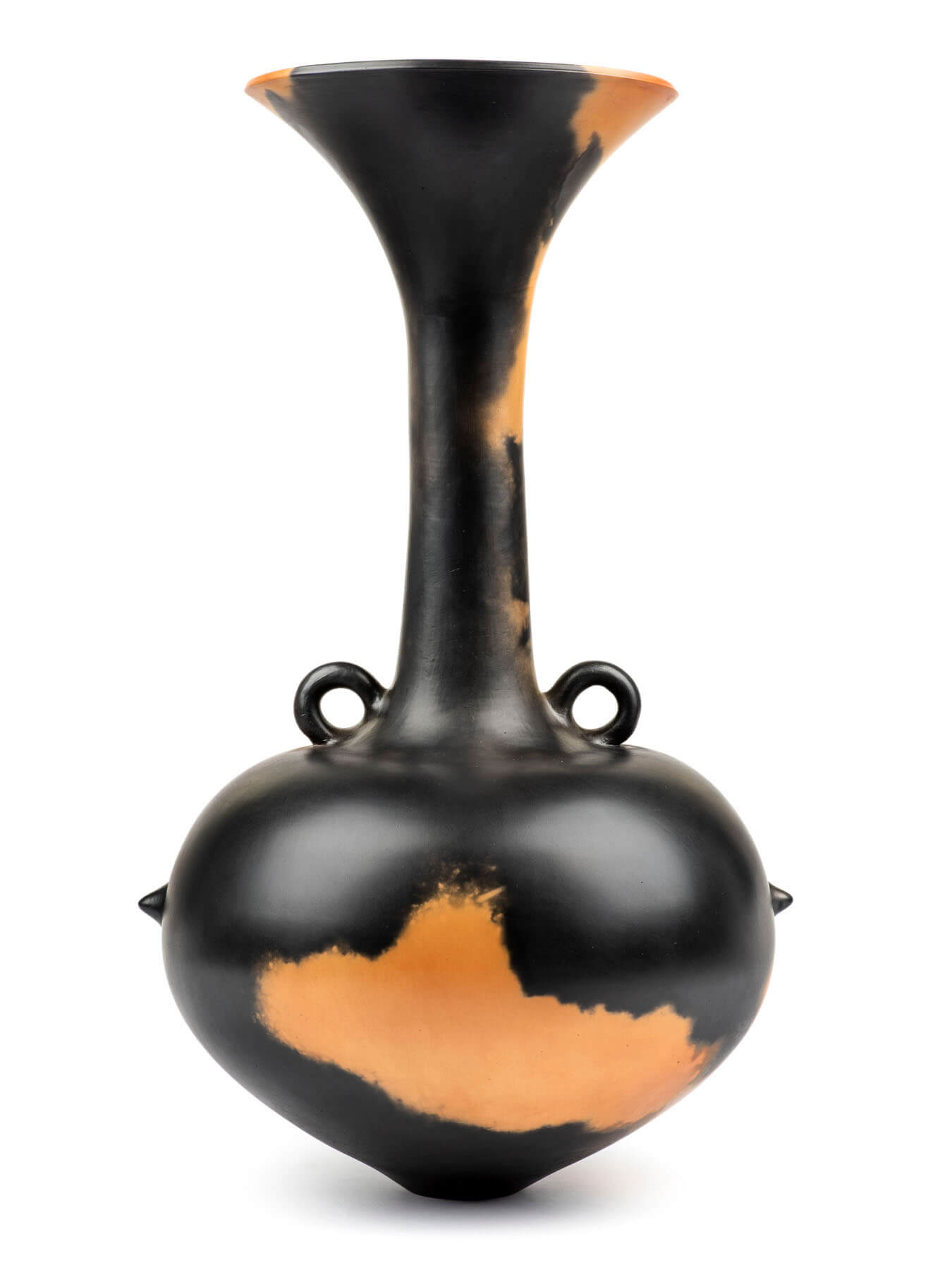
Magdalene A. N. Odundo, ‘Untitled’, 2019
COURTESY: © Magdalene A. N. Odundo and Salon 94
“Hefty in their bodily presence, the works are stately, poised and sleek …”
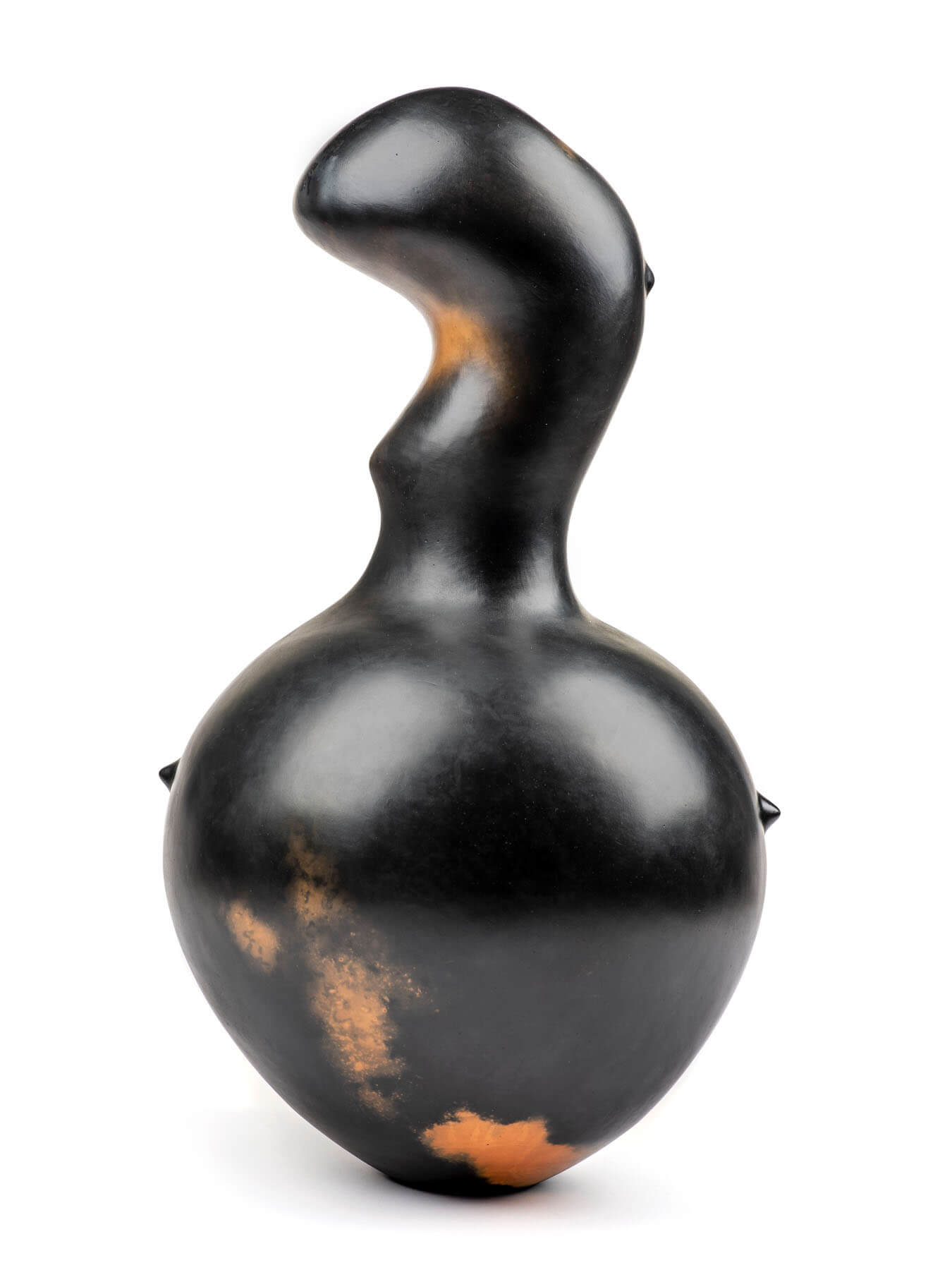
Magdalene A. N. Odundo, ‘Untitled’, 2019
COURTESY: © Magdalene A. N. Odundo and Salon 94
“… dressed with subtle accents that one might liken to beauty marks on a body”
Since moving from her native Kenya to the UK in 1971, Odundo has journeyed consistently in pursuit of her practice. After her first encounter with clay at the University of Creative Arts in Farnham in 1973, the artist embarked on a cross-continental quest to observe different pottery traditions, which have mostly been shaped by the hands of women practitioners. Back in England, she completed a Master’s degree in pottery in 1982, but soon afterwards, she found herself in situ, coil-building with local artisans in Abuja, Nigeria and polishing blackware pots with San Ildefonso Pueblo people of Santa Fe, New Mexico. Appropriately, ‘The Journey of Things’ was the title of her expansive survey at The Hepworth Wakefield in 2019. Fifty of Odundo’s works were displayed alongside the sculptures and other art works she had selected, from an intergenerational span of artists and craftspeople, to reflect the affinities and influences that have shaped her. She placed Degas’s ‘Little Dancer Aged Fourteen’ alongside one of her signature red clay pieces; Rodin and Henry Moore’s human forms were paired with her own mysterious, and non-invasive, interpretations of the body.
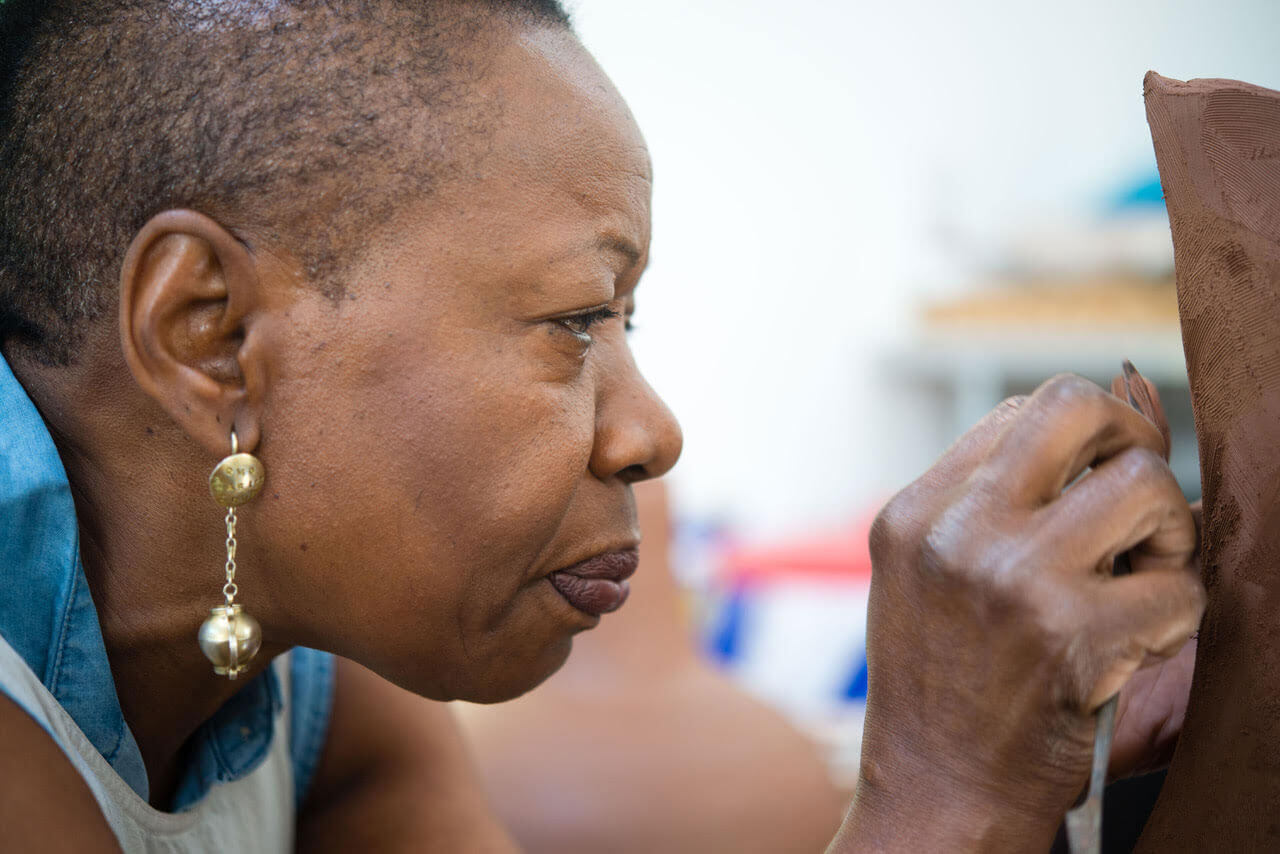
Magdalene A. N. Odundo
COURTESY: Magdalene A. N. Odundo, Anthony Slayter-Ralph, Salon 94 / PHOTOGRAPH: ©Ben Boswell.
“My goal with this exhibition is to present Magdalene as a sculptor,” Greenberg Rohatyn says, pointing out a long-necked vessel in black and occasional tan hues: “She has been refining these consistent forms of symmetry and asymmetry for years. They are part of the DNA of sculpture today.” In Odundo’s voluptuous forms, she not only sees contemporary black women artists, such as Simone Leigh or Wangechi Mutu, “but I see Brancusi through another filter, which is not a western one in particular.”
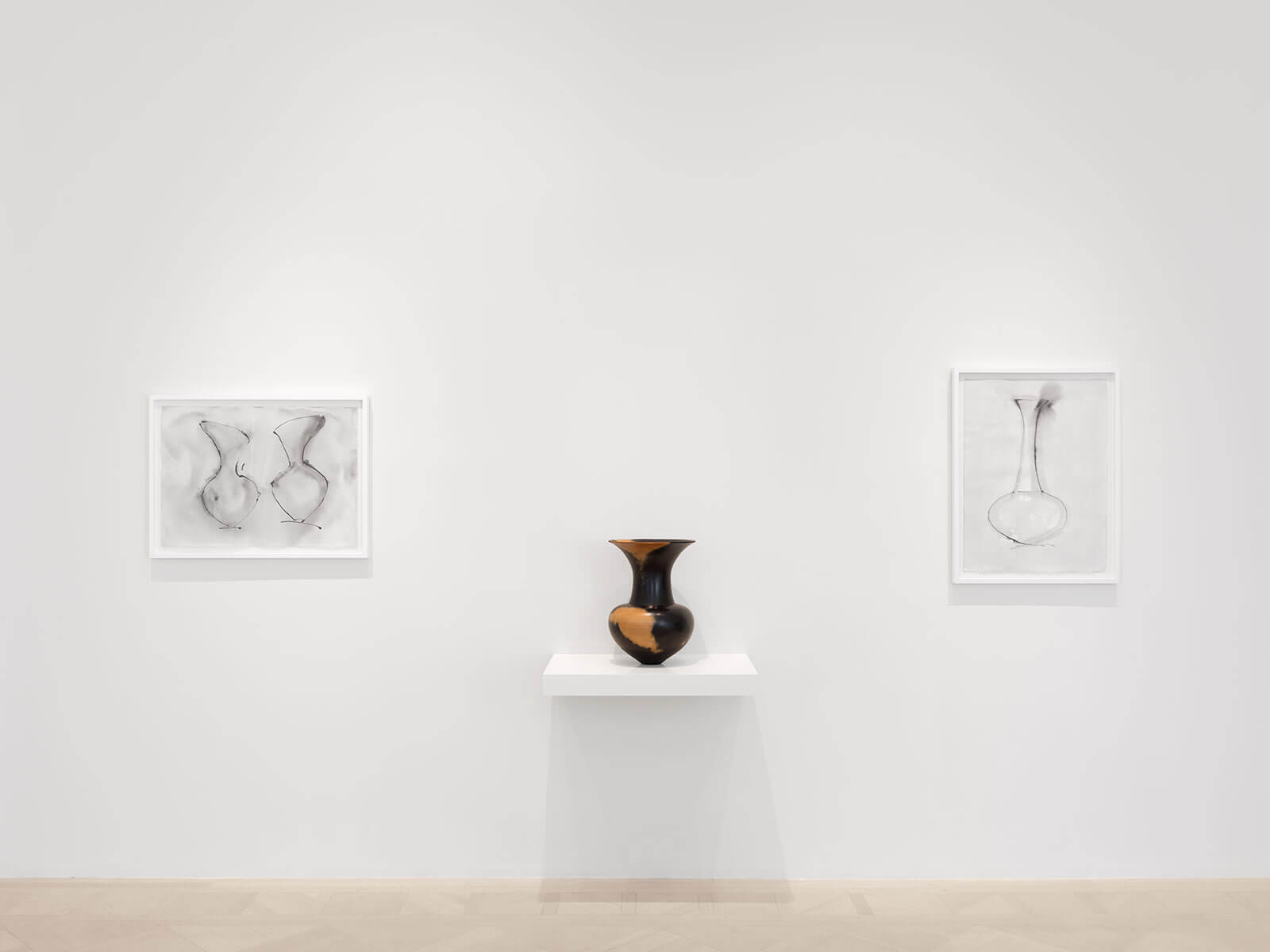
Magdalene A. N. Odundo, (left to right): Sketchbook drawing 4, 2021; ‘Untitled’, 2018; Sketchbook drawing 3, 2021
COURTESY: Magdalene A. N. Odundo, Salon 94 and Anthony Slayter-Ralph / PHOTOGRAPH: Dan Bradica
Characterised both by softness and density, each vessel, painstakingly hand-formed and crowned with an opening, projects a kinetic narrative. Their utilitarian potential is complicated by elongated necks or irregularly-placed holes – for it is the symbolic and ceremonial aspects of the vessel form that are paramount. Odundo lets each piece embody motion and capture a pose. “Once the clay dries, the work becomes a still image of a moving gesture,” Greenberg Rohatyn says. Two vessels placed side by side between a pair of soaring windows manifest the body through their round bellies and slightly curved necks that rise towards their holes. One of them is in Odundo’s signature English red clay, rising from an almost heart-shaped, bottom, dotted with two bumps on opposite sides. The other, in a light-absorbent black, carries a thicker neck, as well as patches of tan shades as a result of multiple firings.
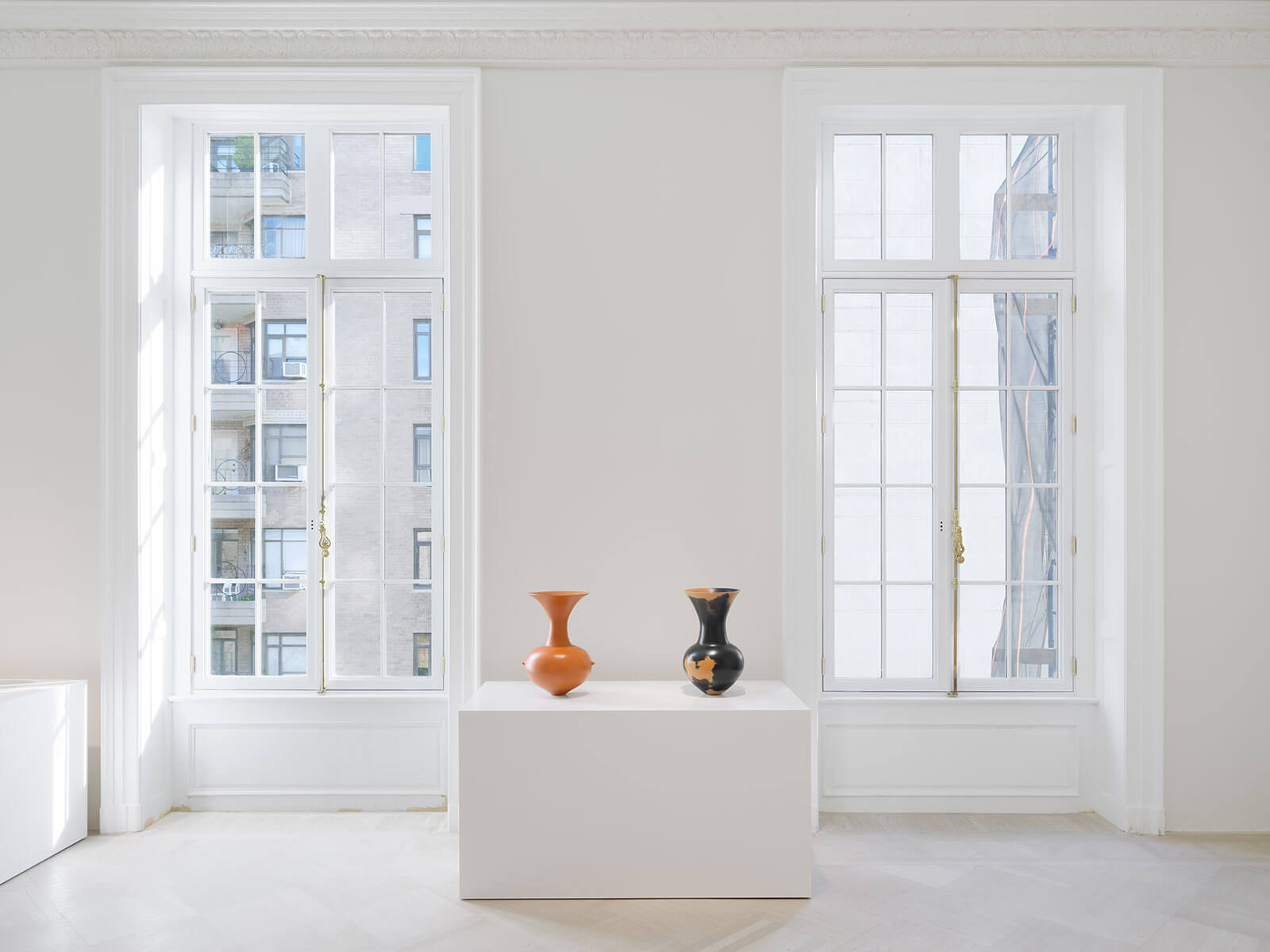
Installation view with Magdalene A. N. Odundo, ‘Untitled’, 2020 (left); ‘Untitled’, 2016 (right)
COURTESY: Magdalene A. N. Odundo, Salon 94 and Anthony Slayter-Ralph / PHOTOGRAPH: Dan Bradica
Odundo’s show is the second in Salon 94’s Rafael Viñoly-designed 1626 square-metre space. It follows an exhibition in March dedicated to Niki de Saint Phalle’s whimsical sculptures, and continues the gallery’s emphasis on female vision. In addition to fine art, the gallery is known for its strong design programming, which has over the years included collaborations with Gaetano Pesce, Philippe Malouin and Jay Sae Jung Oh. “Design and art run parallel and they influence each other,” Greenberg Rohatyn says. She strongly considers Odundo, however, as part of her art program. “This work is in my art practice, because activation through use is design’s most distinguished feature, and these sculptures are art.”
Magdalene A. N. Odundo at Salon 94, New York.
